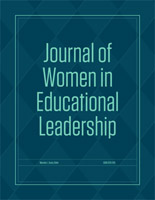Department of Educational Administration
Date of this Version
2007
Document Type
Article
Citation
Journal of Women in Educational Leadership, Vol. 5, No.2-April 2007 ISSN: 1541-6224
Abstract
Review of W. Brad Johnson (2007). On Being a Mentor: A Guide/or Higher Education Faculty. Mahwah, NJ: Lawrence Erlbaum. 234 pages. ISBN 0-8058-4896-7.
W. Brad Johnson set out to prepare a systematic guide for establishing good mentoring relationships in any higher education context. The guide is a framework for differentiating developmental concerns and the fundamental qualities and behaviors of excellent mentors from initiation through redefinition. Hargreaves and Fullan (2000) report that those involved in mentoring for the 21 st century are looking at a vital window of opportunity to recreate the profession.
Johnson makes a case for the importance of intentional, deliberate mentoring. His premise-the benefits of mentoring are the catalysts for ensuring that current intellect flourishes in future generations. Jacob reports that mentoring is the "forgotten fourth leg in the academic stool" that emphasizes how incomplete research, teaching, and service are if developing student-faculty relationships are not nurtured. Johnson designs a four-part guidebook on mentoring. In Part I, he defines mentoring, differentiates mentoring and other relationship forms, and describes exemplars of mentoring in varied contexts. In Part II, he profiles the traits and qualities of the successful mentor and explores the phases of mentorship. In Part III, he unpacks the issues related to successfully mentoring undergraduate, graduate, and junior faculty and provides answers. In Part IV, Johnson reviews the outcomes of mentoring and makes recommendations for managing dysfunctional mentorships.


Comments
Copyright © 2007 Pro>Active Publications. Used by permission.